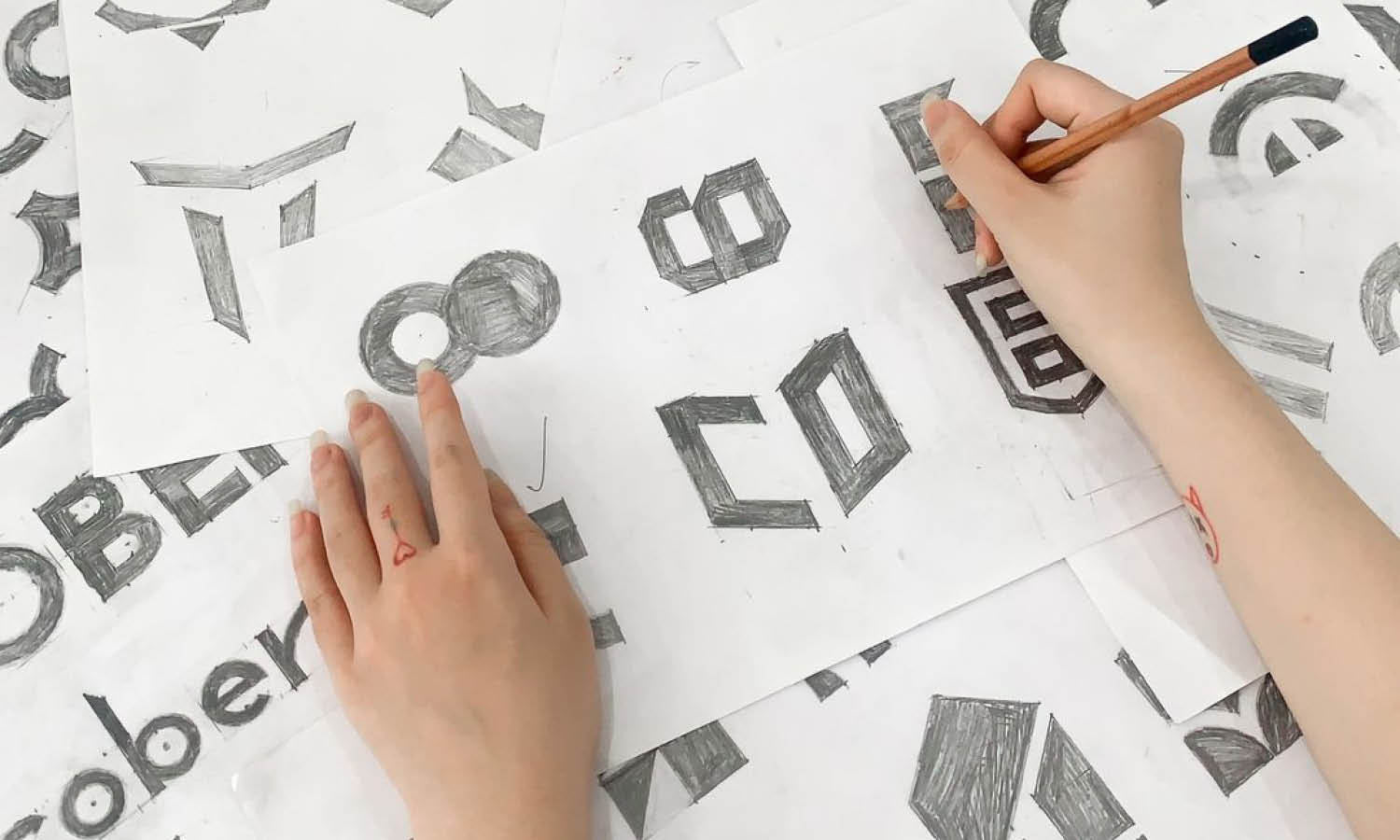Essential Tips on How to Start Your Career as a Logo Designer

Starting a career as a logo designer is an exciting and rewarding journey for those passionate about creativity and branding. Logos are a fundamental part of business identity, representing companies in a way that is both visually appealing and memorable. As a logo designer, you will craft symbols that define brands, communicate messages, and leave lasting impressions.
Becoming a professional logo designer requires more than just artistic talent. It involves mastering design principles, developing technical skills, and understanding branding concepts. The competition in the design industry is fierce, making it crucial to build a strong portfolio, refine your style, and continuously improve your craft. In this guide, you will find essential tips to help you build a strong foundation and start a thriving career as a logo designer.
Master Design Fundamentals
Mastering design fundamentals is essential for anyone starting a career as a logo designer. A well-designed logo is not just a random combination of shapes and text—it is a carefully crafted visual representation of a brand. Understanding key design principles ensures that your logos are not only aesthetically pleasing but also effective in communication.
One of the most important aspects of logo design is balance. Whether symmetrical or asymmetrical, a logo should feel stable and visually appealing. Contrast is another crucial element, helping to create clear distinctions between different parts of a logo. By using contrast effectively in colors, shapes, and typography, designers can direct the viewer’s attention to the most important elements.
Hierarchy plays a vital role in guiding the viewer’s eye. A strong logo design ensures that the most critical information stands out, making it easily recognizable and memorable. Typography, color theory, and negative space also contribute to the overall impact of a logo. Choosing the right font and color palette enhances the brand’s personality, while the strategic use of negative space can add depth and uniqueness.
To build a strong foundation in logo design, practice is key. Analyzing successful logos, sketching concepts, and experimenting with different styles will help refine your skills.
Learn Industry-Standard Software
A successful career as a logo designer requires proficiency in industry-standard design software. While creativity and conceptual skills are crucial, having the technical ability to bring your ideas to life using the right tools is equally important. Mastering vector-based software ensures that your logo designs are scalable, high-quality, and professional.
Adobe Illustrator is the most widely used software in the industry for logo design. Its powerful vector-editing tools allow designers to create sharp, scalable logos without losing quality. Features like the Pen Tool, Shape Builder, and Pathfinder provide precision and flexibility in crafting intricate designs. Learning Illustrator’s shortcuts and functions will significantly improve workflow efficiency.
CorelDRAW is another popular option among designers, offering similar vector-based capabilities with a user-friendly interface. Some designers also explore Affinity Designer as a cost-effective alternative. While the software you choose depends on preference, mastering at least one professional tool is essential.
Beyond vector design, having basic knowledge of Adobe Photoshop can be beneficial, especially for presenting mockups and refining raster-based details. Understanding file formats is equally important—knowing when to use AI, EPS, PNG, or SVG ensures logos are delivered in the highest quality for various applications.
Consistent practice with design software is necessary to build confidence and speed. Following tutorials, experimenting with tools, and recreating existing logos can help improve technical proficiency.
Understand Branding Principles
Understanding branding principles is essential for building a strong career as a logo designer. A logo is more than just a graphic—it serves as a visual identity that represents a brand’s personality, values, and mission. To create impactful logos, designers must think beyond aesthetics and consider how a logo integrates into a brand’s overall identity.
A successful logo should be simple, memorable, and versatile. Simplicity ensures that the logo remains recognizable and effective across various mediums. A cluttered or overly complex design can reduce brand recall and make reproduction difficult. Memorability is crucial because a logo should leave a lasting impression on customers, helping them associate the design with a brand instantly.
A strong understanding of color psychology and typography plays a major role in branding. Colors evoke emotions and influence how a brand is perceived. For example, blue often conveys trust and professionalism, while red signifies passion and energy. Typography also communicates a brand’s tone—modern sans-serif fonts project a sleek, contemporary feel, while serif fonts exude tradition and reliability.
Scalability is another key factor. A well-designed logo should work seamlessly across different platforms, from business cards to billboards. It must maintain clarity in both small and large formats.

Study Successful Logo Designs
Studying successful logo designs is a crucial step in developing a strong career as a logo designer. By analyzing iconic logos, designers can gain insight into what makes a logo effective, timeless, and memorable. Observing industry-leading brands provides valuable lessons in simplicity, balance, and brand communication.
One common trait among successful logos is their ability to convey meaning with minimal elements. The Nike swoosh, Apple’s bitten apple, and McDonald’s golden arches are prime examples of simplicity at its best. These logos are instantly recognizable and communicate brand identity without unnecessary complexity.
Versatility is another key aspect. A well-designed logo should work across different mediums, from digital screens to physical signage. Studying how successful brands maintain consistency across platforms helps designers understand the importance of scalability.
Color and typography choices in famous logos also provide valuable lessons. The Coca-Cola script conveys a sense of tradition and nostalgia, while Google’s playful color palette represents creativity and approachability. Studying these elements helps designers understand how colors and fonts shape brand perception.
Analyzing rebranding strategies is equally important. Brands like Pepsi and Starbucks have evolved their logos over time while maintaining brand recognition. Understanding these transitions can help designers create logos with lasting impact.
Join Design Communities
Joining design communities is an essential step in building a successful career as a logo designer. Engaging with like-minded professionals allows you to learn, grow, and stay inspired. Whether online or in-person, design communities offer networking opportunities, industry insights, and valuable feedback that can enhance your creative journey.
Platforms like Behance, Dribbble, and Reddit design forums provide spaces where designers can showcase their work, receive constructive criticism, and connect with potential clients or collaborators. These platforms also expose you to diverse design styles and trends, helping you expand your creative approach.
Engaging in discussions, participating in design challenges, and seeking mentorship from experienced designers can significantly improve your skills. Many communities host workshops, webinars, and networking events where professionals share their expertise, offering insights into branding, typography, and design principles.
Offline design communities, such as local meetups, conferences, and industry events, provide face-to-face interactions that help build lasting professional relationships. These connections can lead to collaborative projects, job opportunities, and freelance gigs.
Being part of a design community also fosters motivation and accountability. Surrounding yourself with passionate designers keeps you inspired and pushes you to improve your craft continuously. Constructive feedback helps refine your work, allowing you to grow as a professional.
Take on Freelance Projects
Taking on freelance projects is a great way to gain experience and build credibility in your career as a logo designer. Freelancing allows you to work with diverse clients, refine your design process, and develop a strong portfolio that showcases your versatility.
For beginners, small projects with startups, local businesses, or non-profit organizations provide hands-on experience. These opportunities help you understand client expectations, project timelines, and branding needs. If you lack real-world projects, creating concept logos for fictional brands can help demonstrate your skills.
Freelancing teaches essential skills beyond design, including client communication, negotiation, and time management. Learning how to discuss design concepts, handle revisions, and deliver final files professionally is crucial for long-term success. Setting clear contracts and pricing structures ensures smooth collaborations and fair compensation for your work.
Platforms like Upwork, Fiverr, and 99designs offer a starting point for finding freelance projects. However, building a personal brand through a portfolio website and networking within design communities can attract more meaningful opportunities. Word-of-mouth referrals and social media presence also help in securing clients.
Each freelance project enhances your ability to solve real-world design challenges, strengthens your creative process, and builds confidence in working independently. With persistence and dedication, freelancing can lead to long-term clients, higher earnings, and even full-time opportunities.
Keep Up With Design Trends
Keeping up with design trends is essential for maintaining relevance and innovation in your career as a logo designer. While timeless design principles remain the foundation of effective logos, staying informed about emerging styles ensures that your work remains fresh and competitive.
Trends in logo design often reflect shifts in branding, technology, and consumer preferences. Minimalist logos, geometric shapes, bold typography, and gradient color schemes have all gained popularity in recent years. By studying current trends, you can adapt your designs to align with modern aesthetics while maintaining originality.
One of the best ways to track design trends is by following industry leaders on platforms like Behance, Dribbble, and Instagram. Observing how top designers evolve their styles can provide valuable inspiration. Additionally, reading design blogs, attending webinars, and engaging with design communities will keep you updated on industry shifts.
Experimenting with trends allows you to expand your skill set and discover new techniques. However, it is important to use trends strategically—rather than blindly following them, incorporate elements that enhance a brand’s identity. A great logo balances contemporary appeal with longevity, ensuring it remains effective over time.

Learn How to Price Your Work
Learning how to price your work is a crucial skill in building a sustainable career as a logo designer. Setting the right price ensures fair compensation for your creativity, time, and expertise while maintaining professionalism in client interactions.
When determining pricing, consider factors such as experience, project complexity, and client requirements. A simple logo design for a small business may require less time and effort compared to a comprehensive branding package for a large corporation. Understanding the scope of work helps in setting reasonable rates.
There are different pricing models to consider. Hourly rates work well for projects with undefined scopes, but flat rates are often preferred for logo design, as they provide clarity for both designer and client. Some designers also offer tiered pricing, where different packages include various deliverables such as multiple concepts, revisions, or brand guidelines.
Researching industry standards is essential. Comparing rates with other designers at similar experience levels gives you a baseline for fair pricing. Additionally, factor in non-design tasks such as client meetings, revisions, and final file preparation when estimating costs.
Communicating your pricing confidently and transparently is key. Clearly outline what your fee includes, ensuring clients understand the value behind your work. Avoid undervaluing your services to secure projects—charging too little can set unrealistic expectations and hinder long-term growth.
Create a Professional Online Presence
Creating a professional online presence is essential for establishing credibility and attracting clients in your career as a logo designer. Your digital portfolio serves as a showcase of your skills, style, and expertise, making it easier for potential clients to evaluate your work.
A well-structured portfolio website is one of the most effective ways to present your designs. It should include high-quality images of your best logo work, case studies explaining your design process, and client testimonials that highlight your professionalism. Clear contact information and a call-to-action make it easier for clients to reach out for inquiries.
Social media platforms like Instagram, LinkedIn, and Dribbble provide additional exposure. Regularly sharing your work, design insights, and behind-the-scenes processes helps build engagement and attract a following. Engaging with other designers and potential clients through comments and discussions strengthens your professional network.
Freelance platforms such as Behance, Upwork, and Fiverr also serve as useful spaces to showcase your skills and find project opportunities. Maintaining consistency across all online platforms—using a professional profile picture, clear branding, and concise descriptions—enhances your credibility.
Develop Business Skills
Developing business skills is essential for long-term success in your career as a logo designer. While creative talent is crucial, understanding the business side of design ensures that you manage projects efficiently, communicate with clients effectively, and maintain financial stability.
One of the key aspects of business success is learning how to handle client relationships. Clear communication helps set expectations regarding project timelines, deliverables, and revisions. Writing professional contracts that outline terms, pricing, and scope of work protects both you and the client from misunderstandings.
Time management and organization play a major role in handling multiple projects. Using project management tools like Trello or Notion can help track deadlines and client requests. Developing a structured workflow, from initial brainstorming to final file delivery, ensures efficiency and professionalism.
Financial literacy is another critical skill. Understanding how to price your work, track income and expenses, and handle invoices helps create a stable income stream. Using accounting tools or hiring a professional accountant can simplify financial management.
Marketing and self-promotion are also part of running a design business. Learning how to brand yourself, build an online presence, and network with potential clients will open doors to new opportunities.
Conclusion
Starting a career as a logo designer requires a combination of creativity, technical expertise, and business acumen. By mastering design fundamentals, learning industry-standard software, and understanding branding principles, you can create impactful and professional logos. Building a strong portfolio, engaging with design communities, and taking on freelance projects help establish credibility and attract clients. Developing business skills, pricing your work effectively, and maintaining a professional online presence further contribute to long-term success. With dedication, continuous learning, and persistence, you can carve out a rewarding career as a logo designer, turning your passion for design into a thriving profession.
Let Us Know What You Think!
Every information you read here are written and curated by Kreafolk's team, carefully pieced together with our creative community in mind. Did you enjoy our contents? Leave a comment below and share your thoughts. Cheers to more creative articles and inspirations!
















Leave a Comment